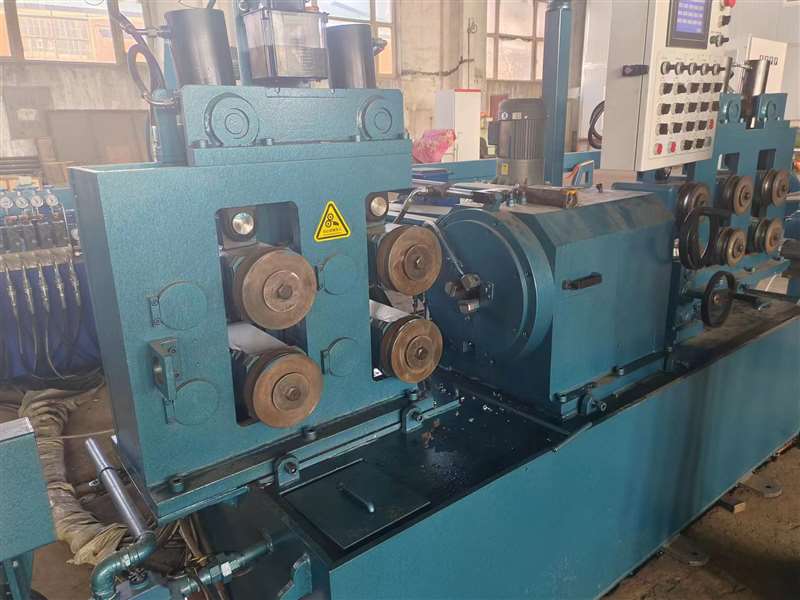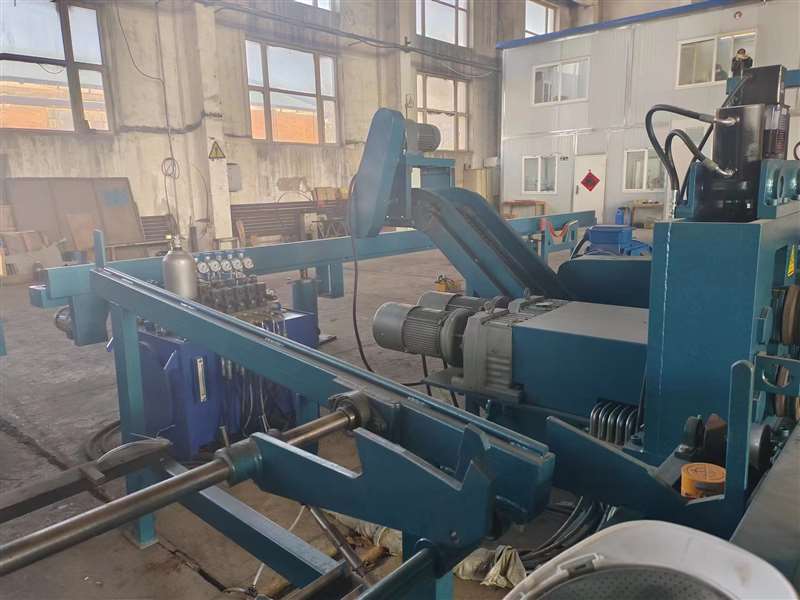- Straightening Machines: Types, Functions, and Applications
- Essential Maintenance and Refueling Guide for Centerless Grinders
- Steel Peeling Machines: Advantages and Applications
- Why Choose Mingcheng Peeling Machine? Boost Production Efficiency and Create Dual Profits
- Metal Materials and Their Development Trends
- Lathes vs Milling Machines: Turning vs Milling
E-mail:liu@mingchenggroup.com
Phone:+86 13322202758
QQ:605712576
Address:No. 20, Gangwan Street, Zhongshan District, Dalian City, Liaoning Province
Centerless Lathe vs. Conventional Lathe Machines
Lathe machines have been a cornerstone in the manufacturing and metalworking industries for centuries. Among the various types of lathe machines, centerless lathe machines and conventional lathe machines stand out due to their unique capabilities and applications. This blog will delve into the intricacies of both centerless lathe machines and conventional lathe machines, exploring their working principles, components, advantages, and applications.
Conventional Lathe Machines
Conventional Lathe Machines
Working Principle
Working Principle
A conventional lathe machine, often referred to simply as a lathe, operates on the principle of rotating the workpiece against a stationary cutting tool. The workpiece is held in place by a chuck or between centers, and the cutting tool moves along various axes to shape the material.
Components
Components
A conventional lathe machine comprises several key components. The headstock houses the main spindle, speed change mechanism, and the chuck that holds the workpiece. The tailstock supports the other end of the workpiece and can be moved along the bed. The carriage holds and controls the cutting tool's movement. The bed provides a solid base and alignment for the machine components, while the lead screw controls the movement of the carriage for precise cutting operations.
Advantages
Advantages
Conventional lathe machines offer several advantages. They are versatile, capable of performing a wide range of operations such as turning, facing, threading, and drilling. They provide high accuracy and surface finish for intricate designs. Additionally, their simple setup and operation make them suitable for both beginners and experienced machinists.
Applications
Applications
Conventional lathe machines find applications across various industries. In the automotive industry, they are used for manufacturing engine components, shafts, and gears. The aerospace industry relies on them for producing high-precision parts like turbine blades and landing gear components. In general manufacturing, they are utilized for creating custom parts, prototypes, and small batch production runs.
Centerless Lathe Machines
Centerless Lathe Machines
Working Principle
Working Principle
Centerless lathe machines, also known as centerless turning machines, differ from conventional lathes as they do not use a chuck or centers to hold the workpiece. Instead, the workpiece is supported by a blade and regulated by two wheels – a grinding wheel and a regulating wheel. The grinding wheel performs the cutting operation, while the regulating wheel controls the rotational speed and feeds the workpiece through the machine.
Components
Components
Centerless lathe machines consist of several essential components. The grinding wheel is the primary cutting tool that removes material from the workpiece. The regulating wheel controls the workpiece's rotational speed and feeds it through the machine. The support blade provides a stable platform for the workpiece during the cutting process. The feed system is the mechanism that advances the workpiece into the grinding wheel, and the control system allows for precise adjustments to the wheels and feed rates.
Advantages
Advantages
Centerless lathe machines offer distinct advantages. They are capable of processing multiple workpieces simultaneously, increasing production efficiency. They provide uniform results with minimal variation between parts. The reduced setup time, due to the lack of centering or chucking, speeds up the setup process. Centerless lathe machines are particularly effective for machining small, cylindrical components with high precision.
Applications
Applications
Centerless lathe machines are widely used in various industries. In bearing manufacturing, they produce bearing races and rollers. The automotive industry uses them for manufacturing small parts like valve lifters, bushings, and pistons. In the medical device industry, they create precision components for surgical instruments and implants. The aerospace industry relies on them for producing small, high-precision parts for engines and other critical systems.
Comparison: Centerless Lathe vs. Conventional Lathe
Comparison: Centerless Lathe vs. Conventional Lathe
When comparing centerless lathe machines and conventional lathe machines, several key differences emerge. The holding mechanism differs, with conventional lathes using a chuck or centers to hold the workpiece, while centerless lathes support the workpiece on a blade controlled by two wheels. In terms of material handling, conventional lathes are suited for both small and large workpieces, whereas centerless lathes are best for small, cylindrical workpieces.
Production volume also varies between the two types of machines. Conventional lathes are ideal for custom parts, prototypes, and small to medium batch production, while centerless lathes are designed for high-volume production with consistent quality. The setup time for conventional lathes is longer due to the need for centering and securing the workpiece, whereas centerless lathes have minimal setup time due to the lack of centering. Both types of machines offer precision, but conventional lathes provide high precision for complex geometries and detailed work, while centerless lathes offer consistent precision for cylindrical parts.
Welcome to Order
Welcome to Order
We are proud to offer both centerless lathe machines and conventional lathe machines to meet your manufacturing needs. Our extensive range of high-quality machines ensures that you can find the perfect solution for your specific requirements. Our team of experts is ready to assist you in selecting the right equipment, providing you with detailed information and personalized recommendations.
We are committed to delivering top-notch products that meet the highest standards of quality and performance. Our machines are designed to enhance your production efficiency, accuracy, and consistency, ensuring that you achieve the best possible results.
Contact us today to place your order and experience the difference our machines can make in your manufacturing processes. Whether you need a versatile conventional lathe or a high-efficiency centerless lathe, we have the right solution for you. Welcome to order and join our growing list of satisfied customers who trust us for their machining needs.
- Previous:The Application of Metal Bar Straightening Machines
- Next:Revolutionizing Industrial Efficiency with Rotary Bending Straightening
-
2023-09-19How The Round Steel Peeling Machine Works?
-
2023-09-19Round Steel Peeling Machine







